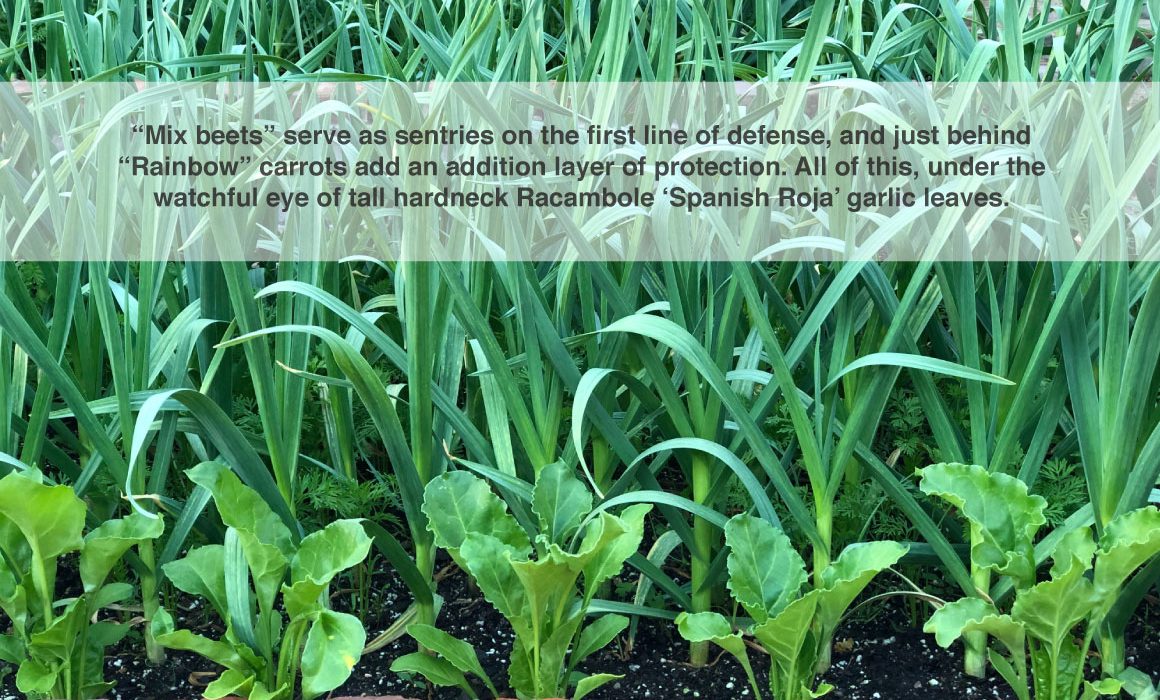
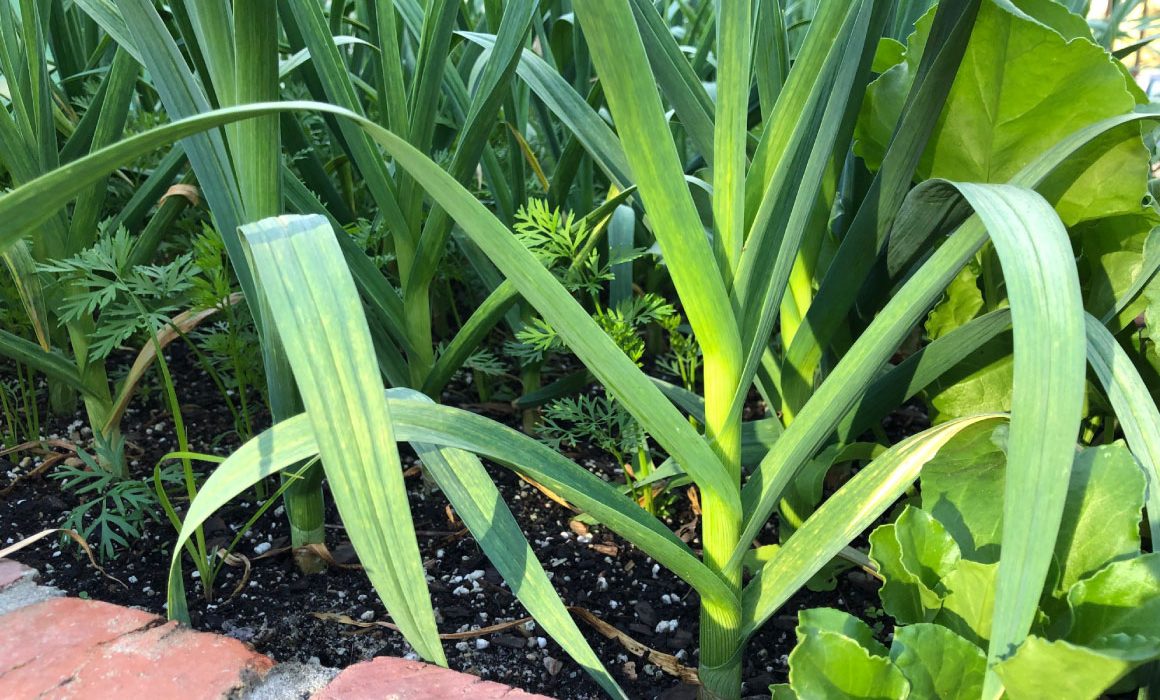
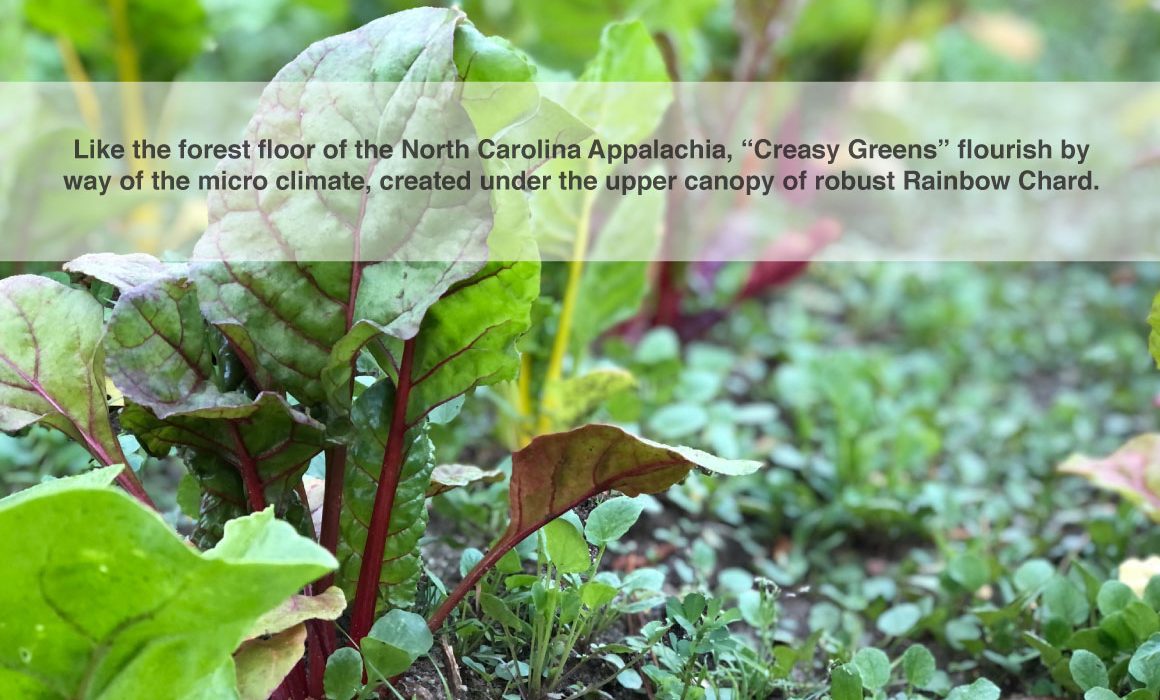

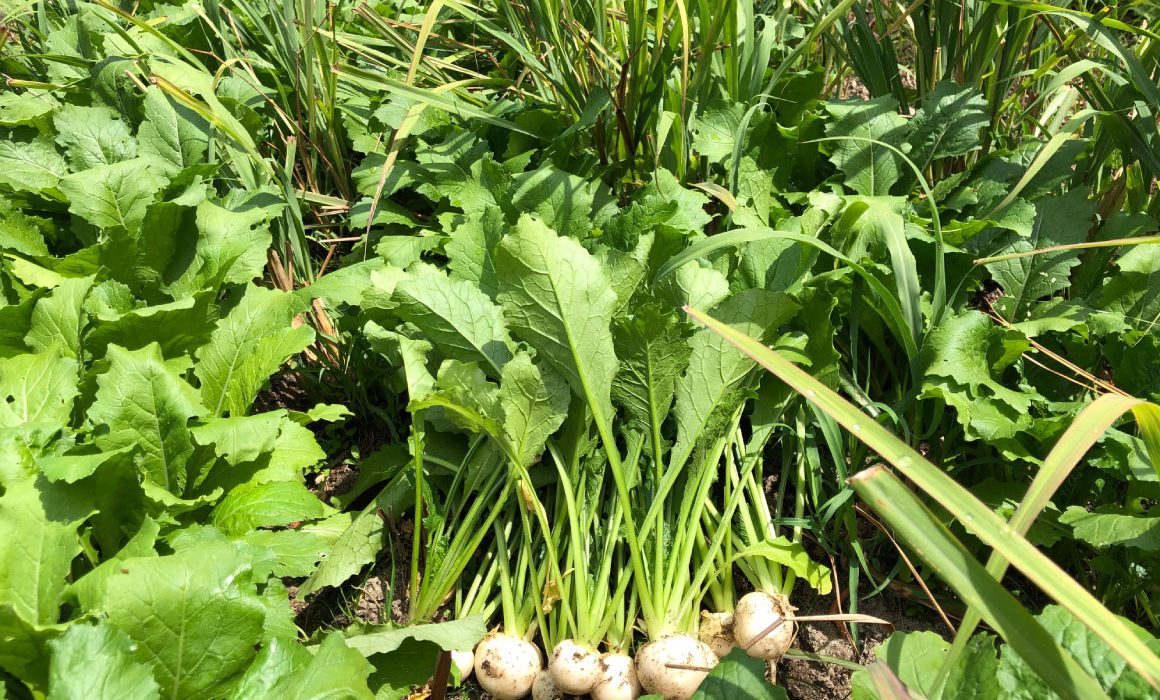
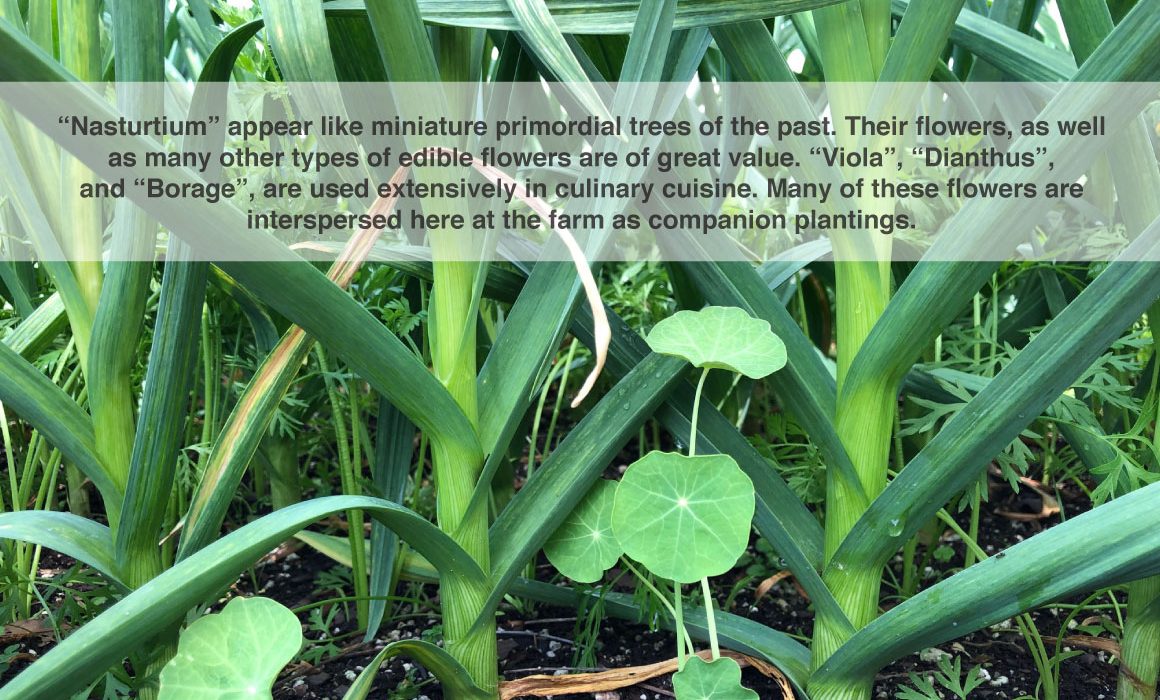
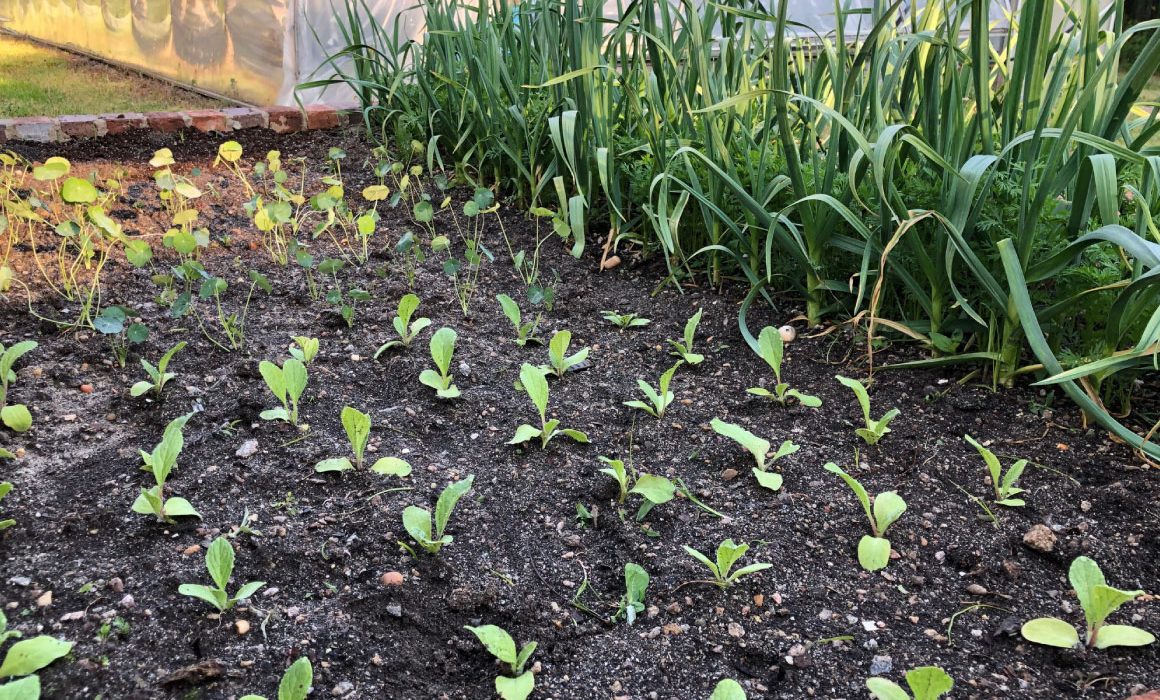
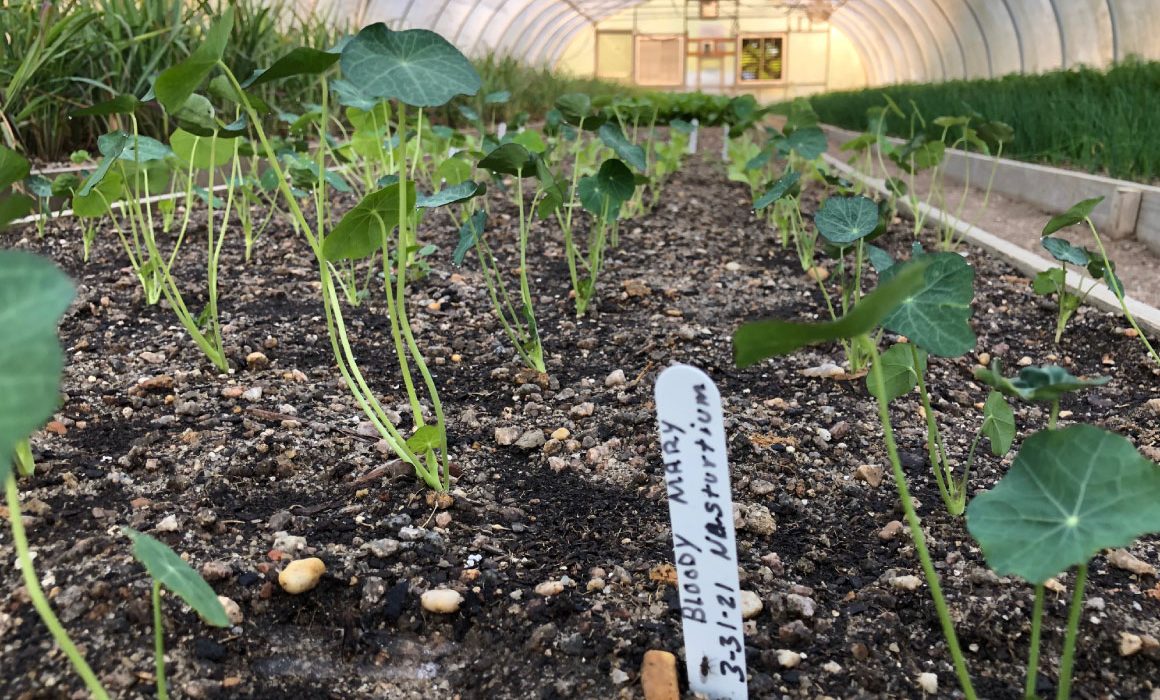
2021 May News
People often ask, “Where should I plant?”, but an equally important question, after that decision is made, is “What should I plant?”. Once the design or layout of the growing area is determined; the decision of what should be planted follows. And indeed, the list of plants to choose from is endless. We plant in a row crop fashion. This is because linear design, for us, lends itself to a more productive planting, maintenance and harvest schedule. But what we have also been doing, and continue to explore, is companion planting which is an important element of the tried and proven agricultural method known as permaculture.
Companion planting is the art of growing plants together that share synergistic attributes of the other. A plant simpatico — so to speak. A common example is the tomato and basil plant. Basil helps repel detrimental insects of tomatoes and many experienced growers are convinced interlocking the root system of basil with a tomato enhances the tomato fruit’s flavor. However, not all plants grow well together. An example is the black walnut tree. It actually produces toxins from its leaves and root system, known as juglone. Juglone is a hormone that helps eliminate competition from under the walnut tree’s canopy. So it is important to know what plants benefit from one another and what plants do not.
There is a book about companion planting by the late Louise Riotte first published in 1975 called Carrots Love Tomatoes: Secrets of Companion Planting for Successful Gardening. A very good book for someone who is interested in maximizing not only the production and aesthetic value of their garden, but also maintaining and enhancing the inclusion of the natural world around them.
You can see, in AnLe’s recent 2021 spring photos, some of the companion planting we have incorporated here at the farm. Things seem to work out well when we are “growing with nature in mind”.
Eat a Peach.
Steve